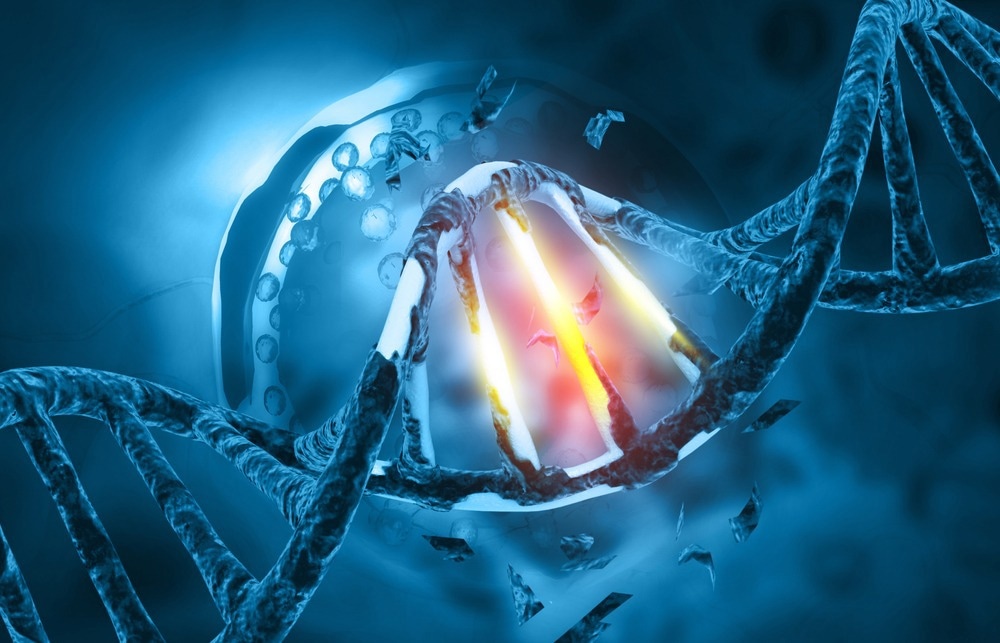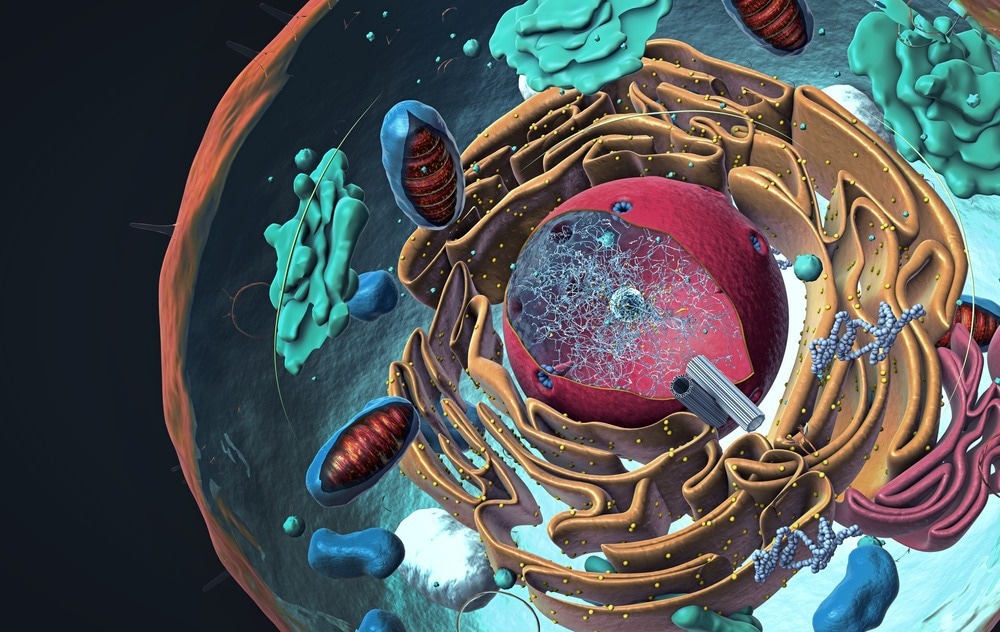Genetic toxicology is a discipline that aims to understand how different physical and chemical agents may lead to DNA damage and how alterations in the genetic material cause mutations when not repaired in time. There are diverse types of potentially toxic substances that can trigger DNA rearrangements, such as point mutations, genomic instability, and epigenetic modifications.

Image Credit: Explode/Shutterstock.com
Genotoxicity tests are essential in identifying mutagenic substances harmful to human health, a process especially important in drug development and formulation screening.
Genetic Toxicology: a Broad Definition
The expression genetic toxicology (also known as genotoxicity) refers to the study of certain chemical or physical factors whose exposure may increase the risk of suffering mutations associated with disease states. The alteration in the nucleotide sequence triggered by toxic substances may be accompanied by the fixation of genetic mutations when these '"errors" are not timely corrected via endogenous repair mechanisms, which are activated in response to DNA damage.
Some examples of genotoxic agents that induce DNA damage include, among others, nitrogen dioxide (NO2), ionizing radiation (e.g., UV radiation), cisplatin, etc. It has been shown that these factors may exhibit carcinogenic potential and act as mutagenic agents in biological systems.
Genotoxicity Tests
Genotoxicity can be assessed and accurately identified by the characterization of how a potential risk factor may play a significant role in inducing DNA damage and epigenetic modifications. Assessing the genotoxic potential in drug development is fundamental to ensure 100 percent safety procedures.
The first phase of the genotoxicity assessment generally involves computational models integrating numerous physicochemical variables to screen multiple candidate formulations (over a thousand) simultaneously. Genotoxicity tests also rely on applying the potentially harmful formulations on either bacterial cells or eukaryotic cell lines (e.g., somatic mammalian cells) and subsequent identification of mutations induced by the candidate drug.
Some of the most widely used genotoxicity tests include:
- The Comet Assay, also known as the single-cell gel electrophoresis assay, is a procedure that measures DNA damage by embedding cells in an agarose gel, which is then followed by high salt-detergent lysis and separation by electrophoresis. This technique is useful to estimate DNA strand breaks by the statistical comparison of differential electrophoretic migration using a control (intact) sample or bulk DNA.
- The micronucleus analysis by flow cytometry or simply micronucleus assay is a useful method to evaluate in vitro genotoxic effects by determining both DNA damage and cytotoxicity. The micronuclei are caused by DNA damage or genomic instability (e.g., missegregation of chromosomes during cell division), thereby identification is a helpful indicator of genotoxic effects.
- The Ames test or bacterial reverse mutation assay is an in vitro method to examine the mutagenic potential of a particular agent in bacterial cells, i.e., Salmonella typhimurium and Escherichia coli. This test identifies point mutations by looking for reverse mutant bacteria capable of restoring their ability to synthesize essential amino acids.
- The GreenScreen assay is an in vitro reporter assay to predict in vivo genotoxic potential. The assay employs a plasmid containing the regulatory sequence of the growth arrest and DNA damage gene, an essential gene involved in genomic stress and integrity, coupled to the green fluorescent protein (GFP) gene that serves as a reporter marker or fluorescent indicator.

Image Credit: Christoph Burgstedt/Shutterstock.com
Establishing Barriers to Prevent Genotoxicity: Cellular DNA Repair Pathways
A eukaryotic cell is equipped with a battery of different signaling molecular pathways that help it to repair mutations in the nucleotide genomic sequence after exposure to low or moderate levels of the toxic agent. Some of the most widely known DNA repair pathways include (1) base and nucleotide excision repair pathways, (2) mismatch repair, (3) non-homologous end joining, and (4) homologous recombination. These mechanisms revert genotoxic effects that lead to DNA damage and thus restore the original nucleotide sequence.
Perspectives in Genotoxicity Assays
Prevention of genotoxic effects represents a fundamental issue in drug development, food security, and other life science disciplines ranging from neurosciences to ecological sustainability. It is important to highlight that epigenetic toxicity, which is associated with factors that alter the arrangement of the chemical groups attached to DNA and associated histones (e.g., DNA methylation, histone acetylation), has also been the subject of investigation over the last years. The emergence of a plethora of different novel assays capable of accurately defining when and how a chemical compound may cause harm to the epigenome is redefining the term genotoxicity.
Bioinformatic in silico modeling to simulate cellular conditions has greatly enhanced the predictive ability of genotoxic assays and increased the likelihood of testing thousands of physicochemical agents simultaneously at the molecular level (i.e., at the genetic and epigenetic level). In the near future, powerful computational approaches are expected to be used as a routine before regulatory toxicology studies.
Sources:
- Caipa Garcia, Angela L., Volker M. Arlt, and David H. Phillips. "Organoids for toxicology and genetic toxicology: applications with drugs and prospects for environmental carcinogenesis." Mutagenesis 37.2 (2022): 143-154. DOI: https://doi.org/10.1093/mutage/geab023
- Custer, L. L., and K. S. Sweder. "The role of genetic toxicology in drug discovery and optimization." Current drug metabolism 9.9 (2008): 978-985. DOI: https://doi.org/10.2174/138920008786485191
- Lynch, Anthony M., et al. "New and emerging technologies for genetic toxicity testing." Environmental and molecular mutagenesis 52.3 (2011): 205-223. DOI: https://doi.org/10.1002/em.20614
- Sommer, Sylwester, Iwona Buraczewska, and Marcin Kruszewski. "Micronucleus assay: the state of art, and future directions." International journal of molecular sciences 21.4 (2020): 1534. DOI: https://doi.org/10.3390/ijms21041534
- Wang, Yiying, et al. "Genetic toxicity testing using human in vitro organotypic airway cultures: Assessing DNA damage with the CometChip and mutagenesis by Duplex Sequencing." Environmental and molecular mutagenesis 62.5 (2021): 306-318. DOI: https://doi.org/10.1002/em.22444
Further Reading
Last Updated: Oct 28, 2022